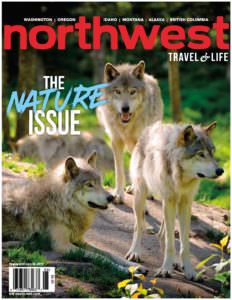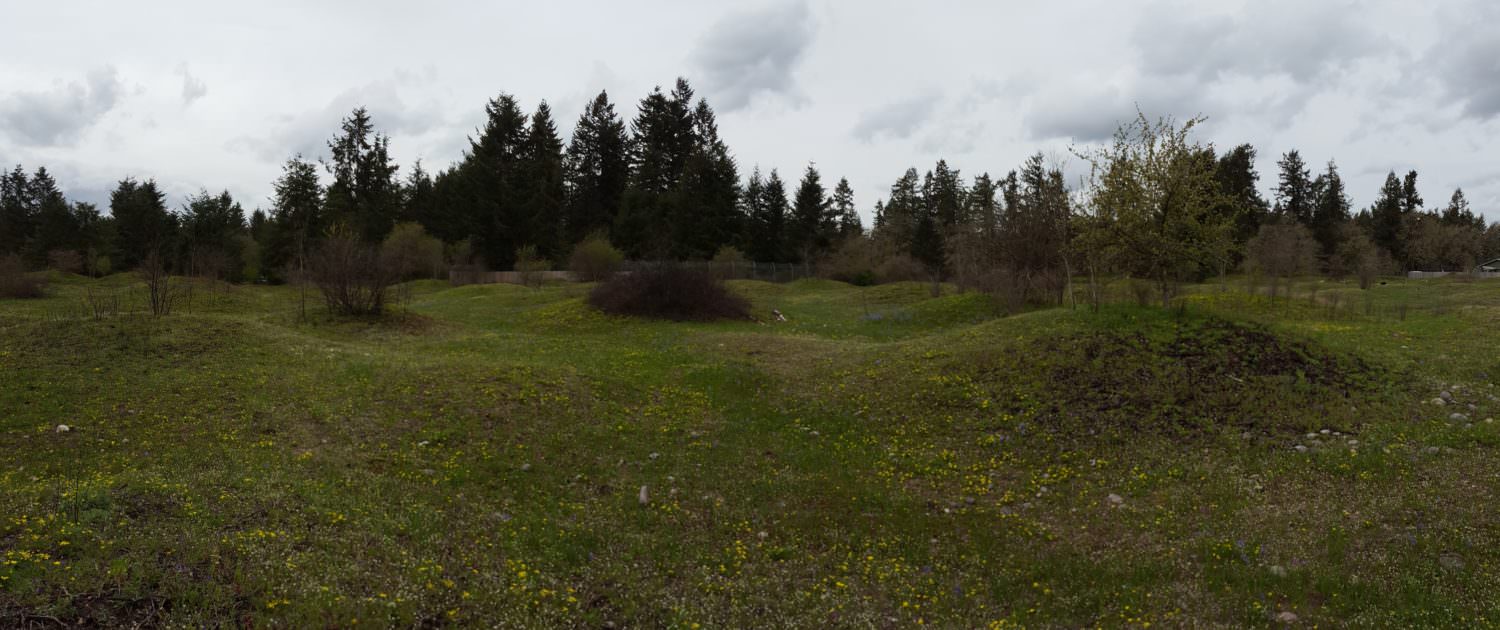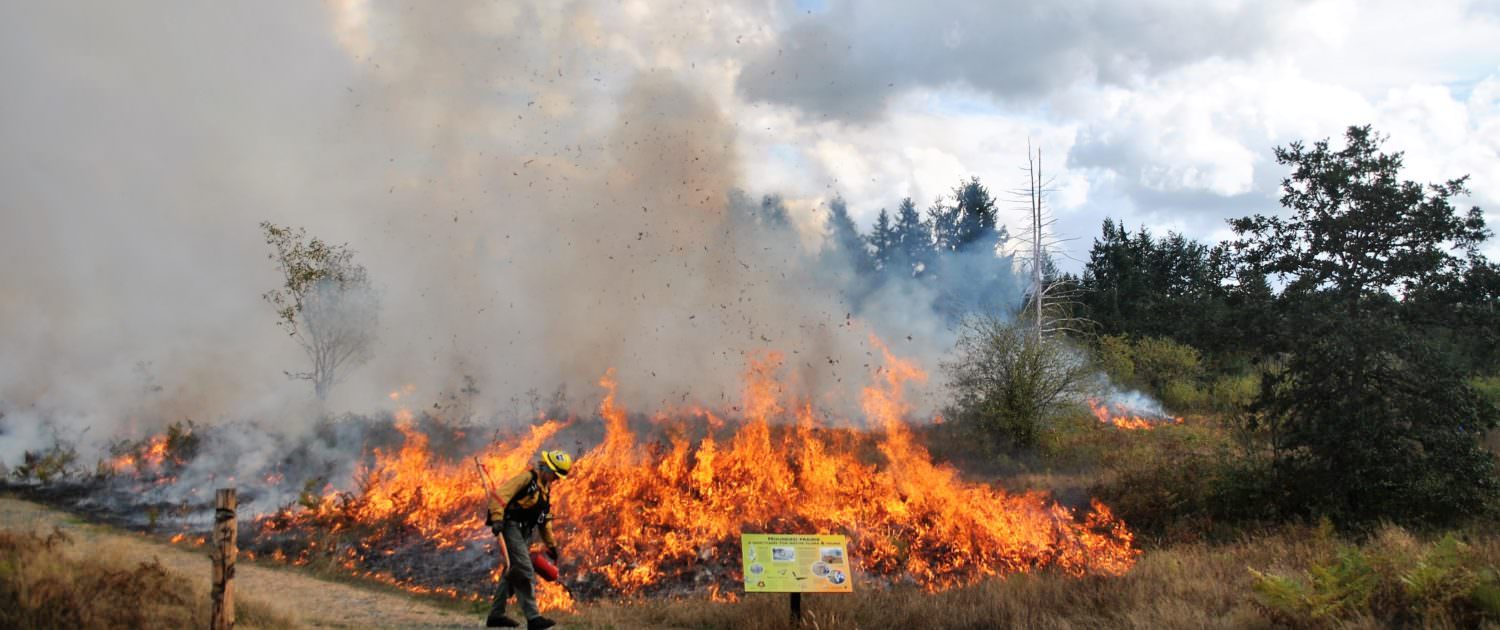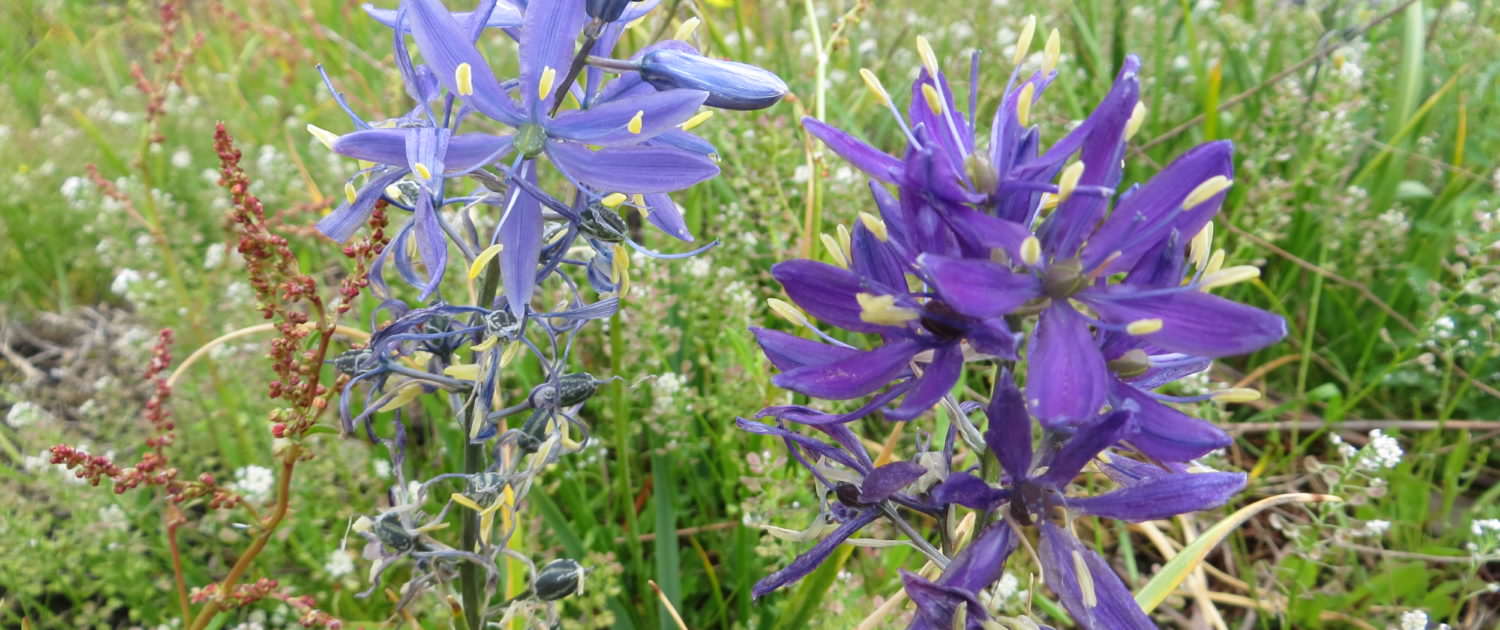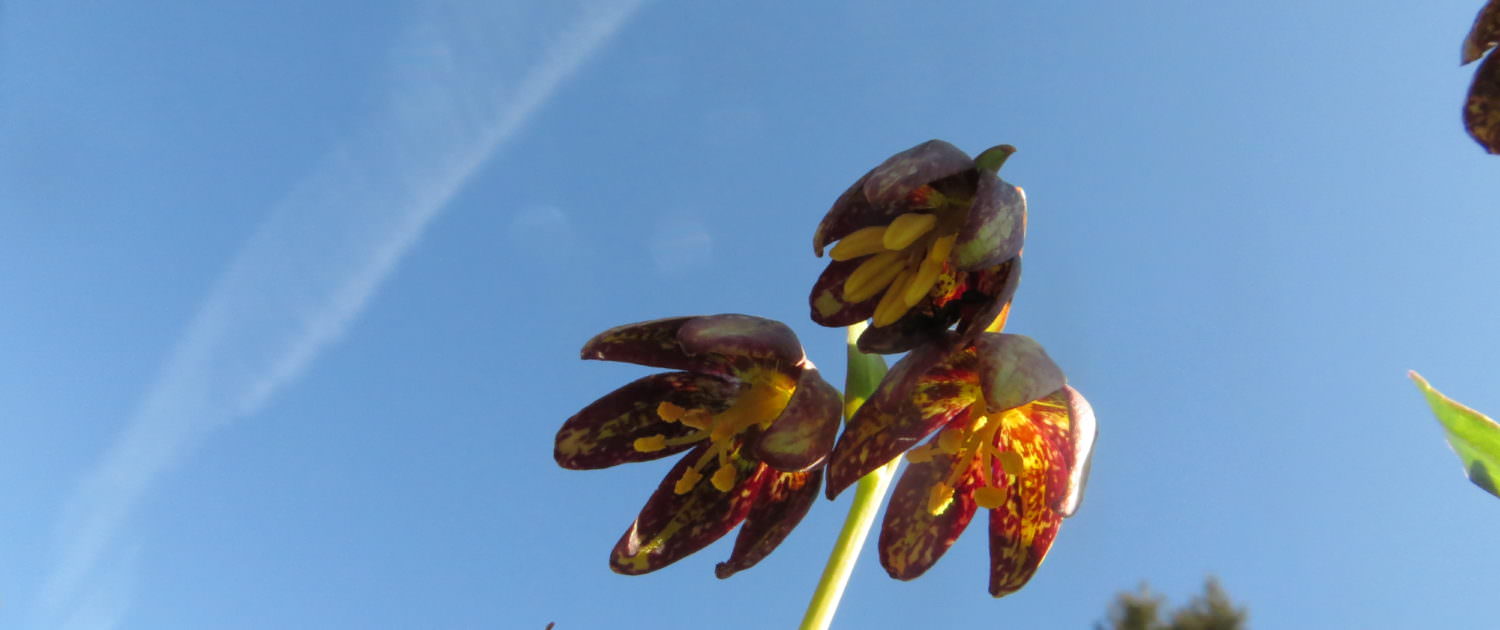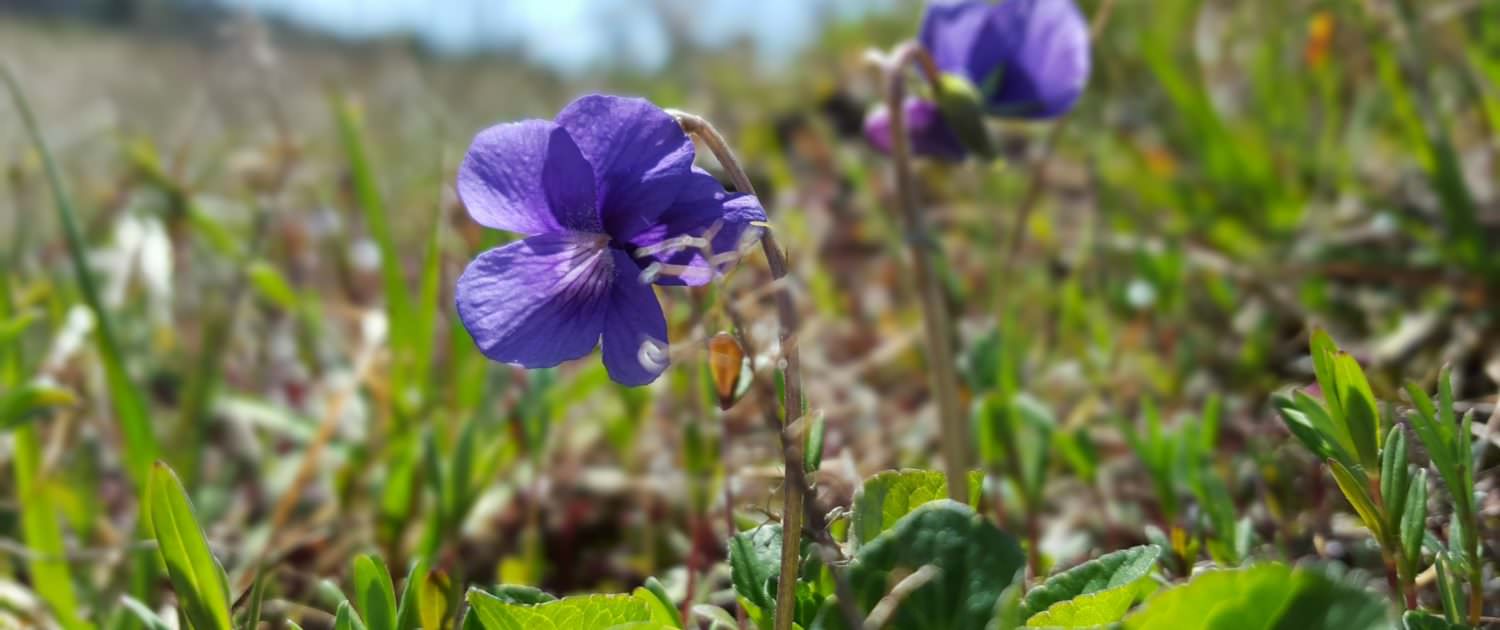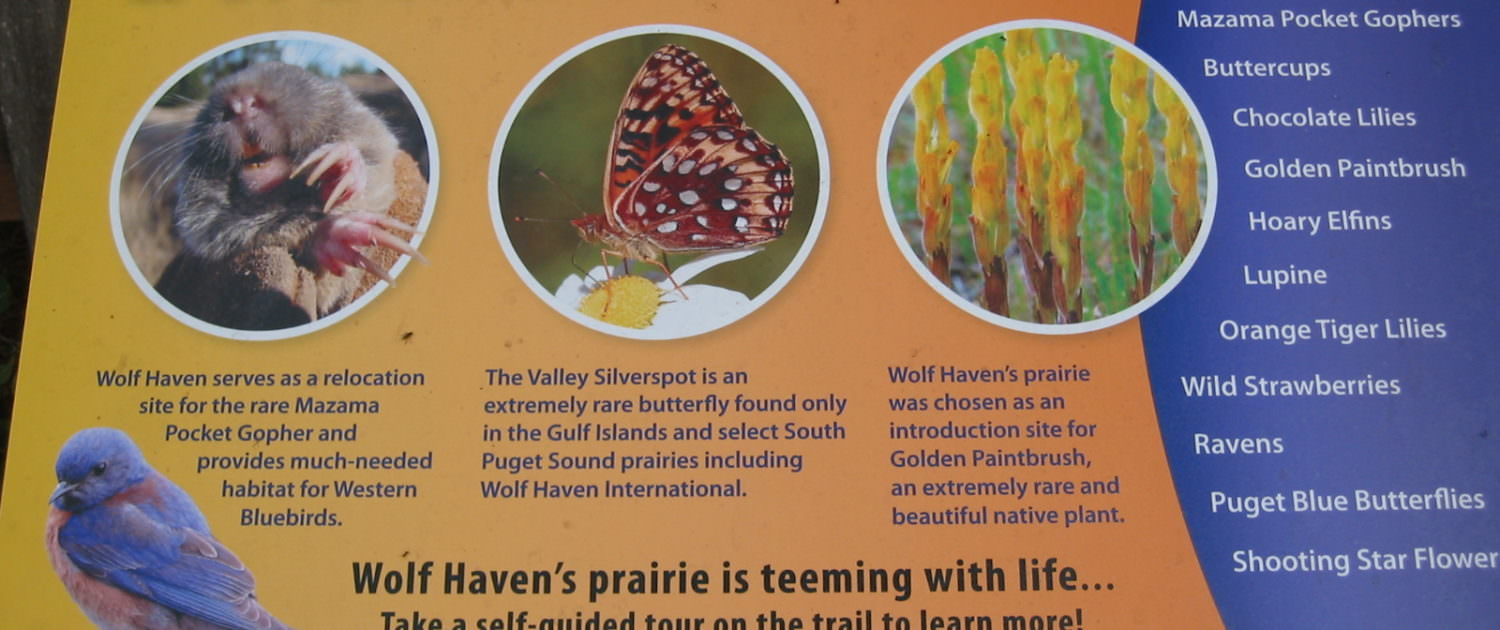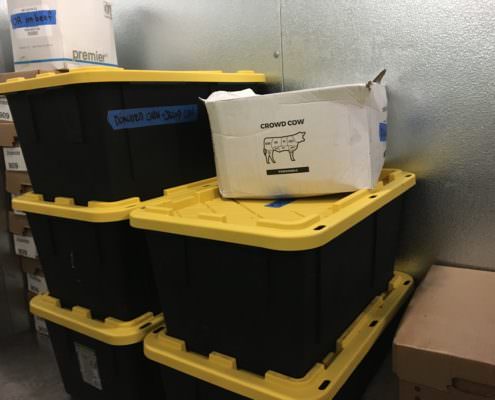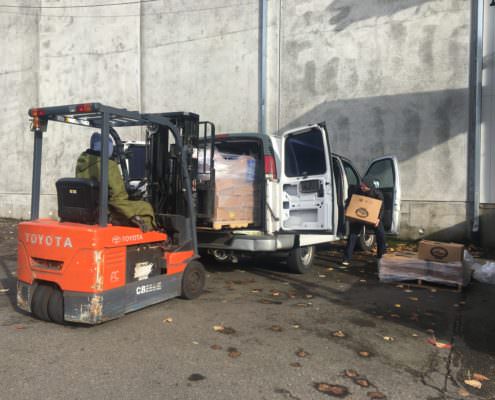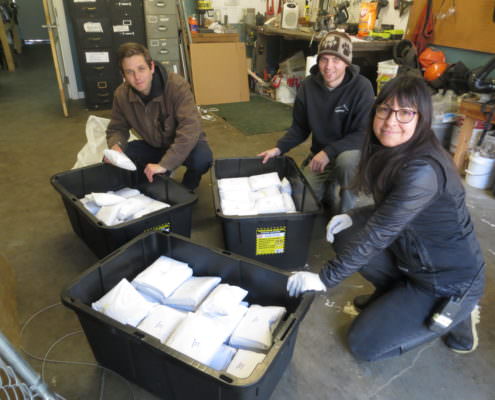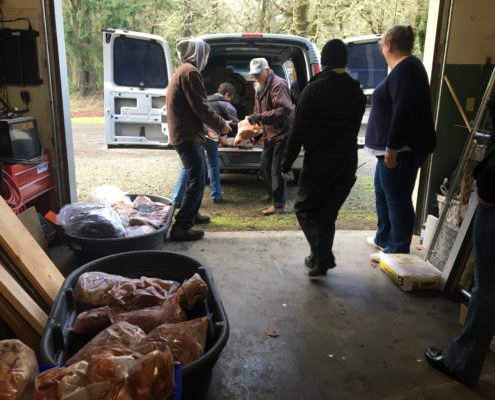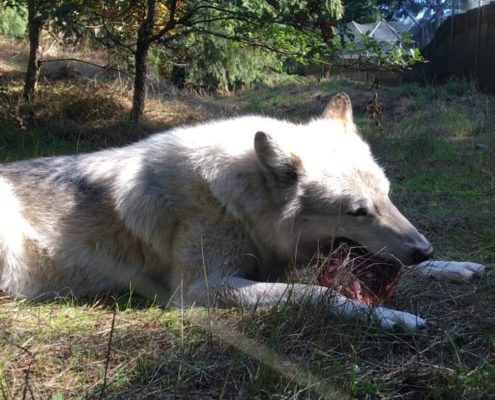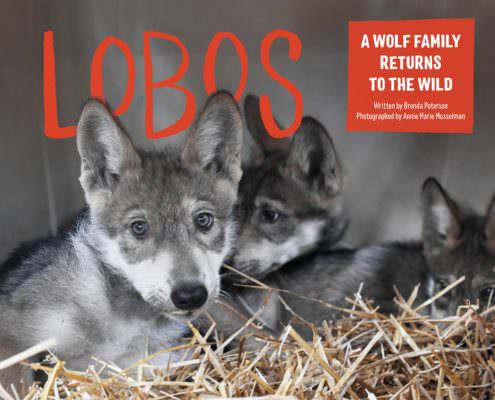Posts
Native Plant Appreciation Week April 21-27, 2019
by Marinka Major, Wolf Haven International
Native plants find sanctuary at Wolf Haven where 37 acres of rolling, grassy Mima Mounds harbor dozens of rare prairie plants. Prairies have a diverse population of native plants that provide food to many animals, some that only live in prairie ecosystems such as the Mazama pocket gopher, Thomomys mazama and the Taylor’s checkerspot butterfly, Euphydryas editha taylori.
Native prairie plants are fire adapted and thrive in prairies that experience regular burns. Centuries ago, indigenous people thoughtfully burned prairies to ensure the survival of the many fire dependent plants. At Wolf Haven, The Center for Natural Lands Management (CNLM) manages and preforms prescribed burns on the prairie, keeping it healthy just as people did generations ago.
Many of the native plant species found in our South Sound prairies have great significance to people for their use as food or medicine. One of the showiest plants on the prairie is the common Camas, Camassia quamash a traditional food still being harvested and eaten today. The Camas produces an onion-like bulb that can be eaten after cooked and the periwinkle flowers cover prairies from late April to mid-May in a spectacular show.
The Chocolate Lily, Fritillaria affinis, also produces an edible bulb and has a unique blossom that resembles a dark brown tulip with bright yellow stamens and pistils that can be seen blooming April through May.
Another enchanting flower of the prairie is the early-blue Violet, Viola adunca. The short plant produces purple flowers that several butterfly and nectar eating species depend on.
Not only does the prairie provide edible bulbs and flowers but berries too! The Western serviceberry, Amelanchier alnifolia is a large shrub that blooms with spiky white flowers in the spring giving way to fat, dark purple berries at the end of summer.
Interpretive signage guides you through our rare prairie.As we celebrate Native Plant Appreciation Week, let’s be sure to not only stop and smell the roses, but to look around and enjoy the wonders of our native plants!
Volunteer of the Quarter – Kieran Lynch
 by Dan Monn, Animal Care, Gift Shop & Volunteer Assistant
by Dan Monn, Animal Care, Gift Shop & Volunteer Assistant
Wolf Haven International is very lucky to have an amazing and diverse group of volunteers. Our newest Volunteer of the Quarter, Kieran, also happens to be one of our youngest, yet the first day I met him, he told me he would have started much sooner if he could. He had quite a wait to meet the age requirement (17), given he wanted to be a volunteer at Wolf Haven ever since visiting in the 5th grade. Knowing his time commitments as a Senior at Black Hills High School with other interests, we are honored that he commits as much time volunteering at Wolf Haven as he does.
Managing his time between school, marching band and working toward his pilot’s license Kieran still spends most Sundays helping us at the docent table. He does a great job engaging and interacting with our guests as they wait for their scheduled sanctuary visits. He has a warm and friendly personality that makes him very approachable for any who are interested in learning a little more during their time with us.
Beyond his interactions with the guests, Kieran also does a lot to help around the grounds. He arrives a couple hours before each docent shift to do some extra work. Usually it is a lot of weeding and pulling blackberry, though some Sundays our Sanctuary Manager Erik Wilber, will steal him to help with a special project. This led to one of Kieran’s favorite memories. Recently working with Erik, Kieran got to help with the preparation for our newest wolf enclosure. This “glamorous” job involved brush clearing in preparation for Southgate Fence Inc. to set posts, hauling away limbs and clearing brambles and blackberry. He was excited to contribute as we work to provide more space and flexibility for the care of the wolves – and WE are excited to have the help of such a dedicated volunteer.
The Gift of Meat
By Kurtis Rattay, animal care assistant, Wolf Haven
During this year’s holiday season, the animals at Wolf Haven International have been gifted with three large-scale donations. They all came from organizations looking for a waste-free way to dispose of high-quality meat that, despite being in good condition, could not be repurposed for human consumption. These donations not only kept the products from going to the landfill but saved Wolf Haven thousands of dollars on feeding costs and provided ethical nutrition for the sanctuary’s residents.
The first donation came from Crowd Cow, a company that connects consumers with independent ranches. The donated meat was either unsold or did not meet the standards set by the company. According to one Crowd Cow employee, their East Coast counterpart regularly donates unsellable meat to animal sanctuaries, and the Seattle-based company contacted Wolf Haven with the same intention. Animal Care staff happily drove down to Forest Grove, OR, to pick up 1,500 pounds of craft beef and chicken.
Only a week later, Animal Care staff drove back to Oregon and picked up a huge donation from an out-of-business pet food company specializing in raw cat food. The company had tried for a while to liquidate its products and had contacted several animal centers. The Wild Cat Sanctuary kindly redirected them to us. We drove back to Wolf Haven with 2,500 pounds of frozen venison, beef, chicken and turkey.
The most recent donation came from Washington Department of Fish and Wildlife. Wendy Lowe, a law enforcement officer with WDFW, generously thought about benefiting the wolves when hundreds of pounds of elk meat needed to be disposed-off, following a now-settled poaching case.
Donations are the lifeblood of nonprofit organizations. Although a precise total amount of savings cannot be calculated, it is safe to put the number in the thousands of dollars. With substantial sanctuary projects on the horizon, these saved costs can then be allocated to improve sanctuary habitat and infrastructure, which in turn increases the quality of life for the animals.
Wolf Haven is deeply grateful to have been chosen by these organizations—and the wolves and coyotes who call the sanctuary home seem to appreciate the gift as well!
Wolf howls at Wolf Haven blog post – Paula Wild
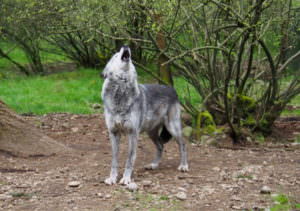
Ladyhawk howls
Author Paula Wild’s latest book, Return of the Wolf: Conflict and Coexistence, was published in October 2018 and became a bestseller in British Columbia. She visited Wolf Haven International in 2016, visited the sanctuary and spent time with Wendy Spencer, our director of operations and Erik Wilber, sanctuary director. Here is a blog post about the howls that she heard while here.
Until Seattle smoke subsides, take steps to keep Fido safe, veterinarians say – Seattle Times
At Wolf Haven International, a wolf sanctuary in Tenino, Thurston County, staff members have already modified the wolves’ schedule this summer, mainly because of hot weather. Staff members feed them late at night,…
Lobos – A Wolf Family Returns To The Wild
Lobos – A Wolf Family Returns to the Wild
This children’s book about a family of Mexican gray wolves (lobos) is a follow-up to Wolf Haven: Sanctuary and the Future of Wolves in North America, (2016, Sasquatch Books). It is a hopeful conservation story about a family of endangered Mexican wolves who begin their lives at Wolf Haven, are transferred to Ted Turner’s Ladder Ranch in New Mexico, and ultimately released into the wild in Mexico.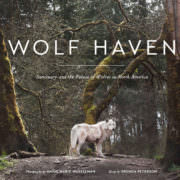
The nonfiction story by Brenda Peterson is illustrated with color photography by Annie Marie Musselman, both of whom were the principals behind the earlier Wolf Haven book. With easy to read text and heart-warming pictures, young people will enjoy learning about wolves and the challenge of reintroducing an endangered species to the wild. Lobos is scheduled for release in mid-August 2018, and prerelease orders can be placed with Amazon, Sasquatch Books, Penguin Random House and other sellers. It will also be available at Wolf Haven’s physical gift shop and website following publication.
You can read reviews of both books here:
Lobos: A Wolf Family Returns to the Wild
Wolf Haven: Sanctuary and the Future of Wolves in North America
by Kim Young, Director of Communications
(This revised article was originally published in Summer 2018 issue of Wolf Tracks,
a Wolf Haven International members-only magazine)

